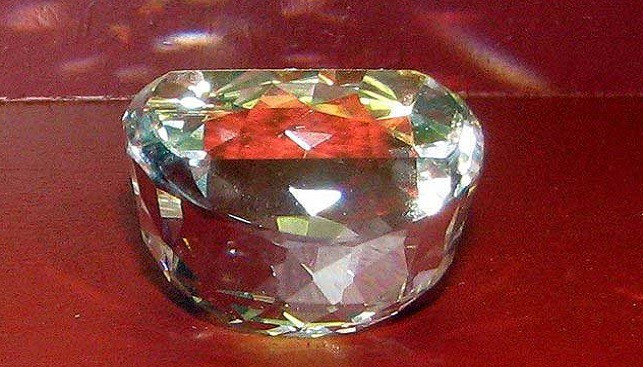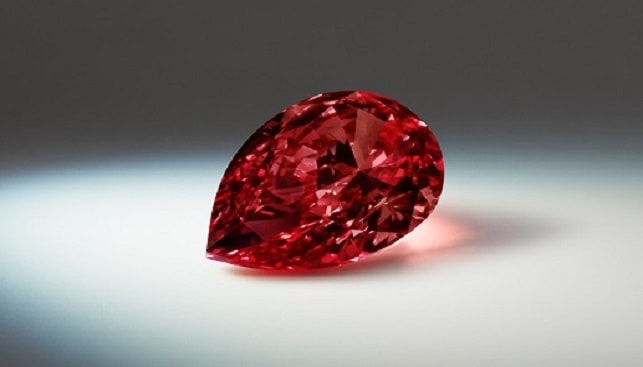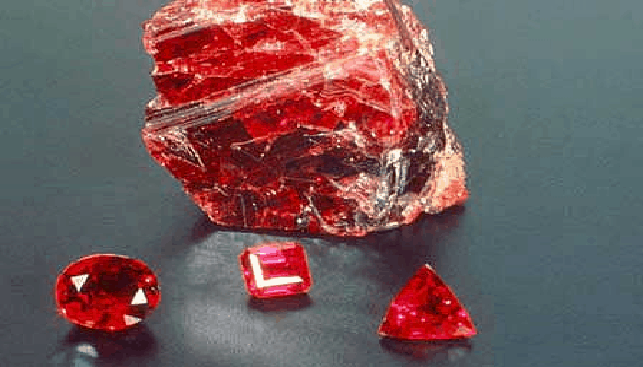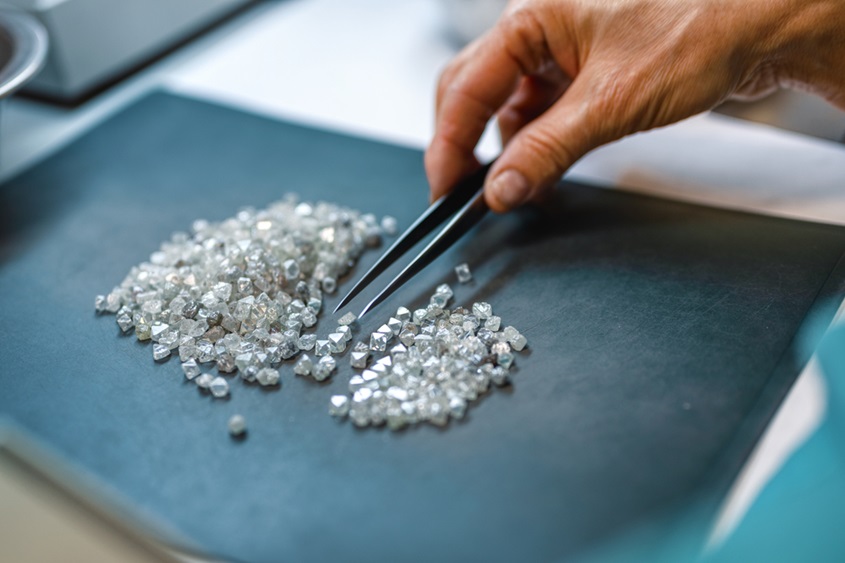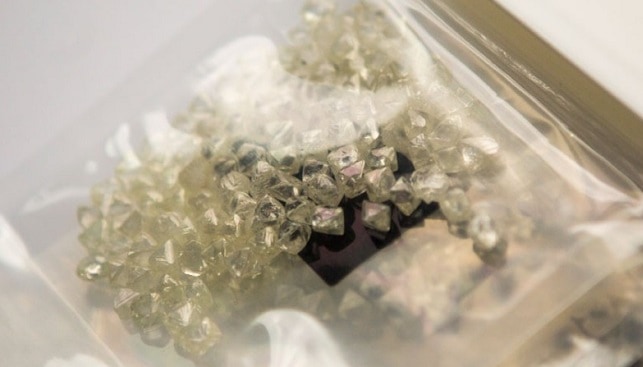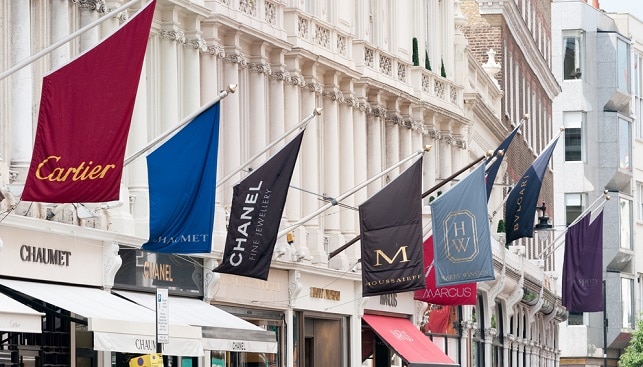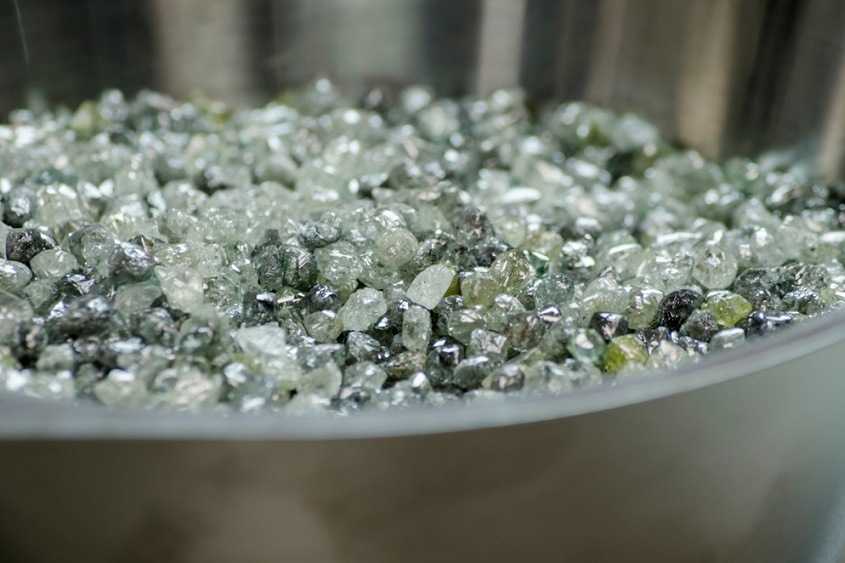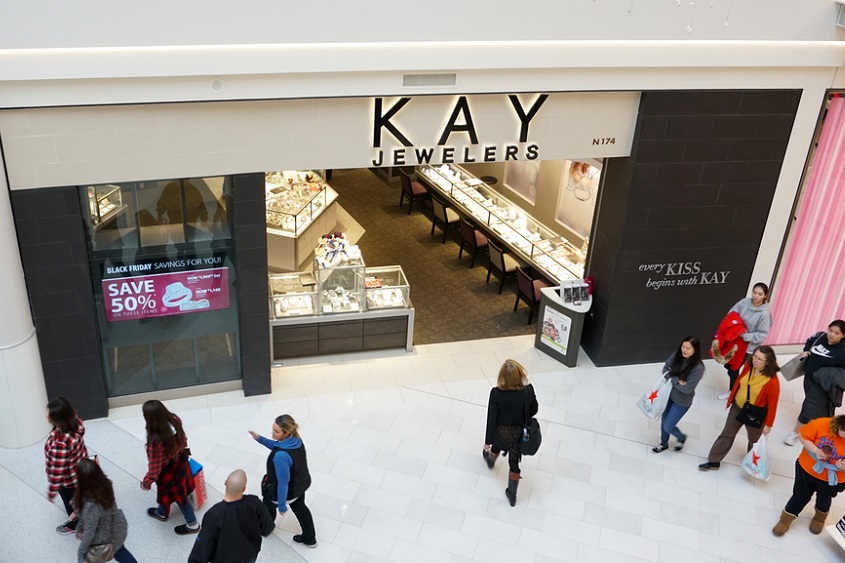The Orlov Diamond, a 189.62-carat bluish-white stone, is one of the outstanding pieces of the Russian Imperial Jewel collection. The diamond’s rose cut features concentric rows of triangular facets on its upper surface, while its lower part is cut in four-sided facets. The distinctive cut, as well as the diamond’s color and clarity, make it almost certain that it originated from India’s famous Golconda mines.
The Orlov Diamond has a dramatic early history, much of which is conjecture.
Two main versions of the diamond’s history exist:
According to the first version, the diamond originally formed the eye of the idol of Lord Ranganatha in a temple in Sriringam in southern India. A French soldier serving in the country in the mid-18th century deserted his legion, converted to Hinduism to gain the priests’ confidence, and after years of scheming stole the diamond and fled. In his panic, the soldier sold the diamond to the captain of an English ship for £2,000. The captain sold it to a diamond trader in London for £12,000, after which it was passed on periodically until an Amsterdam-based diamond dealer named Shaffras bought it.
The second and bloodier version of the Orlov Diamond saga holds that the diamond was part of the Mogul rulers’ property and as such was carried off by Iran’s Nadir Shah after Delhi and Agra were sacked in 1739. Legend has it that an Afghan soldier stole it after Shah’s assassination in 1747 and tried to sell it to the dealer Shaffras. But Shaffras didn’t have money for the purchase, prompting the soldier to sell it to another dealer.
Years later, the story says, Shaffras offered double the price, but the man wouldn’t sell. Whereupon Shaffras and his two brothers allegedly murdered him – and then killed the Afghan soldier. Shaffras, the story says, then killed his two brothers and began moving around Europe, trying to find a European ruler who might desire the diamond.
Eventually, Catherine the Great invited him to court, but the parties failed to strike a deal. Shaffras kept the diamond until Count Grigory Grigoryevich Orlov, a former lover of the empress, finally purchased it for 400,000 rubles in 1772. Catherine had it set in the Imperial Scepter, where it remains.

